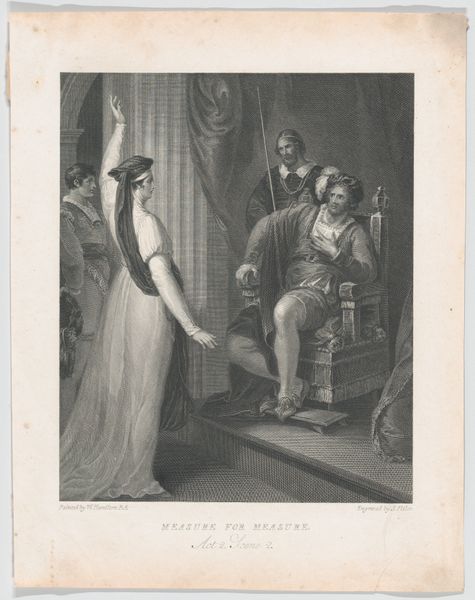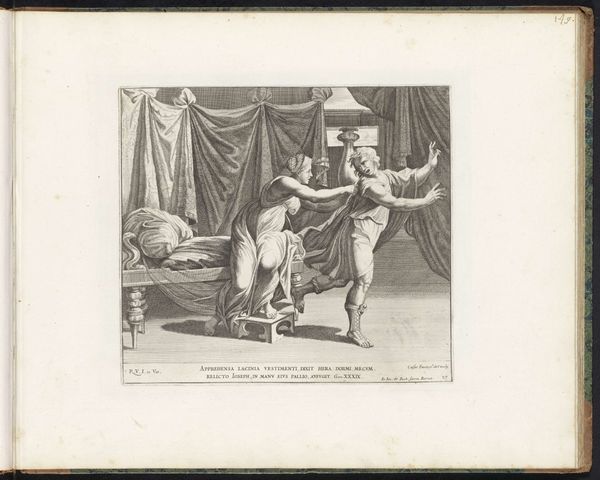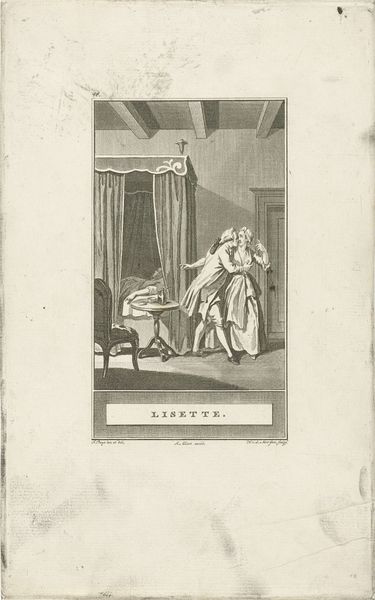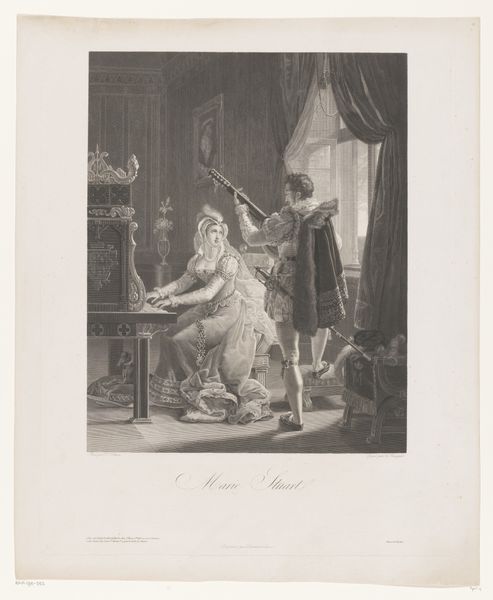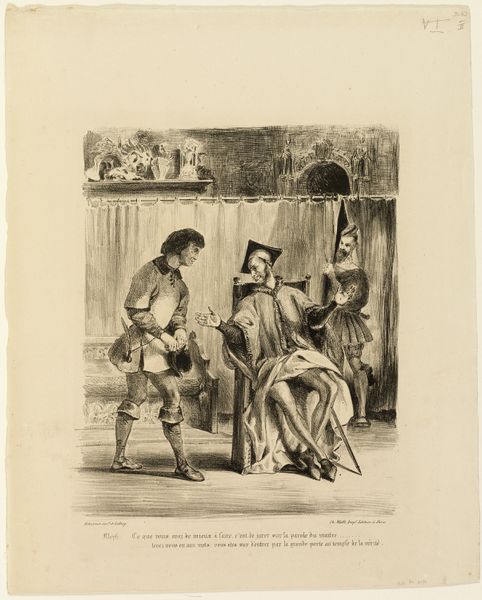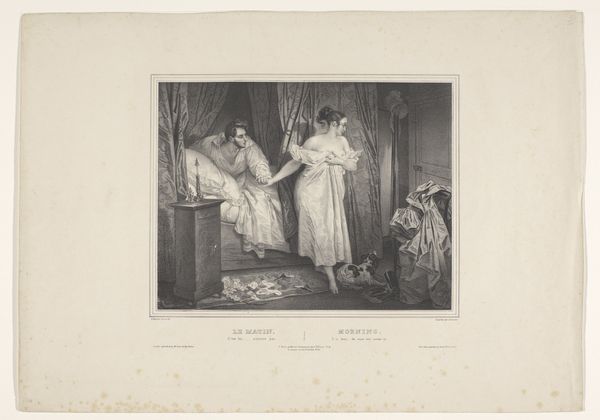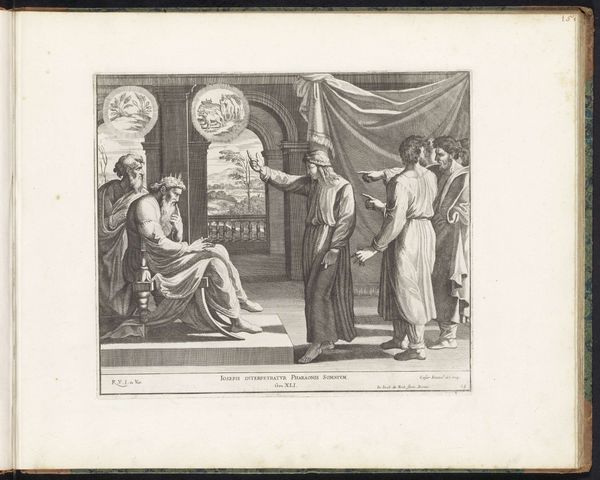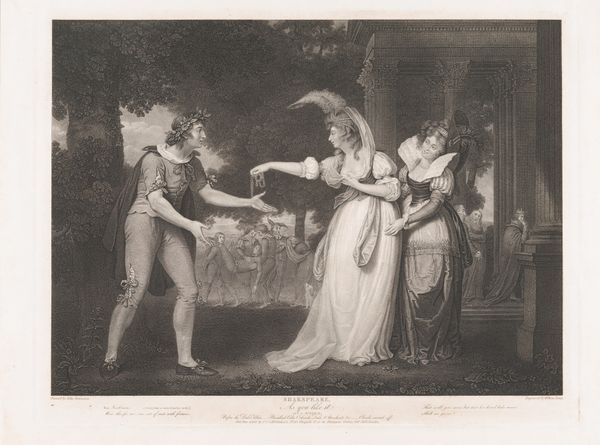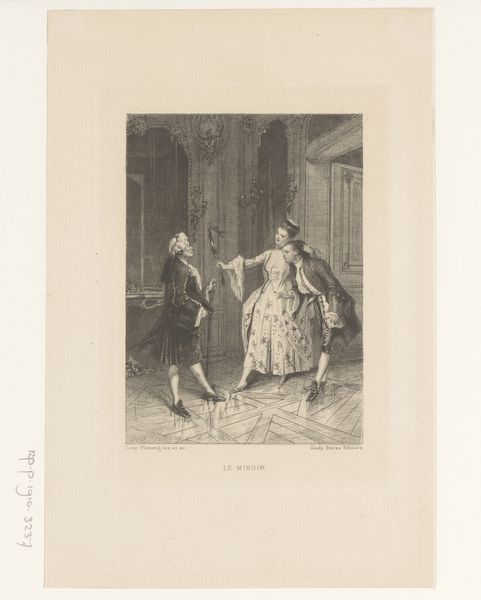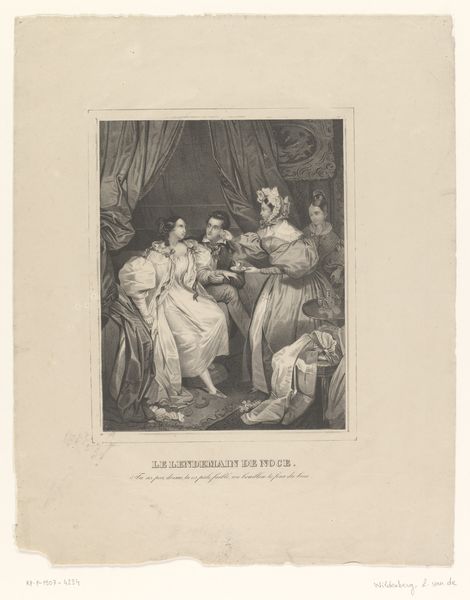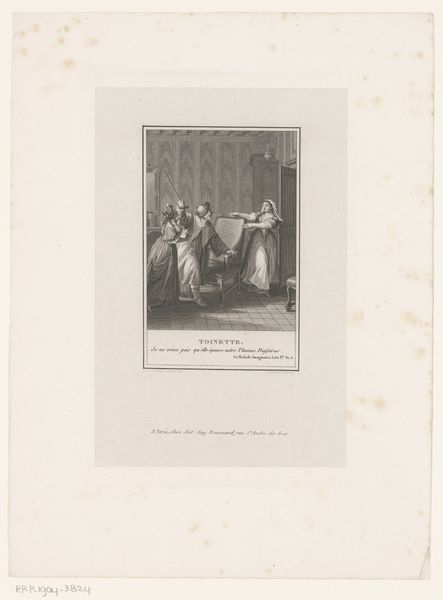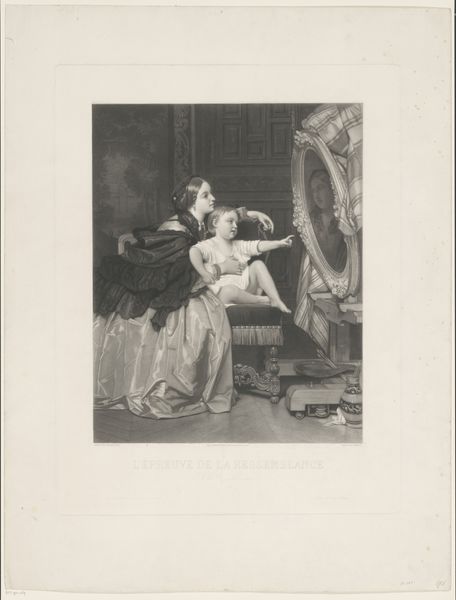
drawing, print, pencil, engraving
drawing
romanticism
pencil
genre-painting
history-painting
engraving
Dimensions: 340 mm (height) x 342 mm (width) (plademaal)
Curator: Looking at Johan Christian Ernst Walter's "Hamlet i samtale med Dronningen," created in 1824, my immediate impression is how stark and theatrical it feels. The sharp contrasts, the posing... it really amplifies the drama of the scene. Editor: Yes, there's definitely a deliberate staging at play. Given this is a print, probably an engraving, it's important to consider how that reproductive process itself influenced the composition and dissemination of the image. These prints had a particular function, circulating theatrical imagery within specific social strata. Who was buying these, and what was their relationship to the performance? Curator: Absolutely. And let’s consider the material itself – the paper, the ink. The very act of engraving forces a certain line quality, doesn't it? This technique surely would impact the mood evoked by the artist. It makes the figures quite rigid. It has to do with class and literacy, but also the technology used to produce and spread the visual imagery of Hamlet. Editor: Exactly. The social context of Shakespeare at that time is equally vital. We see Romanticism's influence with the heightened emotion and emphasis on individual experience. It invites reflection on the social values that are portrayed in this pivotal moment. The print creates and participates in this image and what it represented in society. Curator: You see how Hamlet is pointing to a Ghost figure on the left, in full armour, a looming but translucent form. Hamlet clearly reacts against it, looking directly towards the queen on the right, while she herself appears shocked. I am amazed at the artist’s skill for creating tone and contrast with what is clearly the labour-intensive medium of engraving. The final print must have taken considerable time, particularly in an era before mechanization. Editor: Right. And Walter's decision to depict this specific moment from Hamlet underscores the broader cultural significance the play held. Museums, publications, illustrations... these platforms played a crucial role in shaping public perceptions of the Danish monarchy. How does Walter's interpretation either support or subvert prevailing political ideologies of his time? Curator: I find myself dwelling on how Walter engaged with specific artistic practices to tell the story and to depict royalty – what exactly they wore, what their chambers might have looked like. And how does the chosen medium reflect how theatre played into this particular moment in Denmark's political history? It’s intriguing to see these intertwined here. Editor: Agreed. This work helps us think critically about how images acquire meaning and how cultural institutions reinforce that significance through different mediums and to what level art forms part of this symbolic construction.
Comments
No comments
Be the first to comment and join the conversation on the ultimate creative platform.
